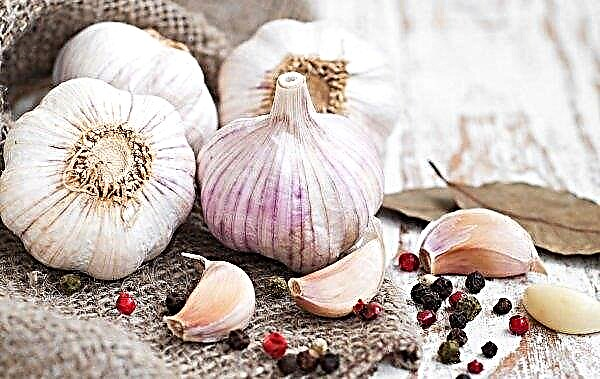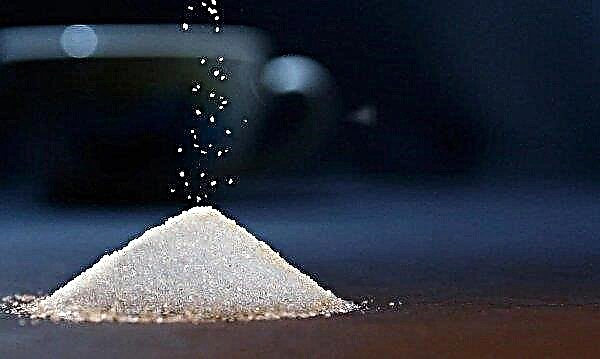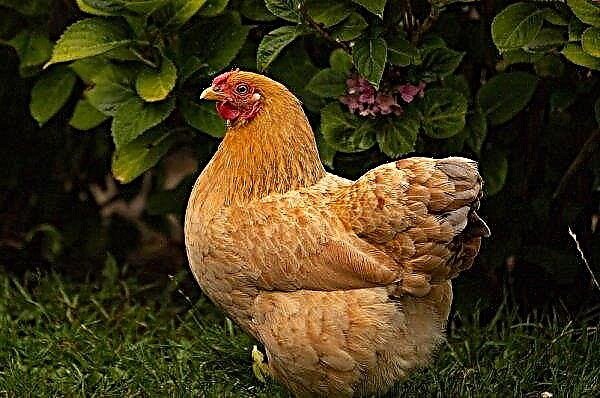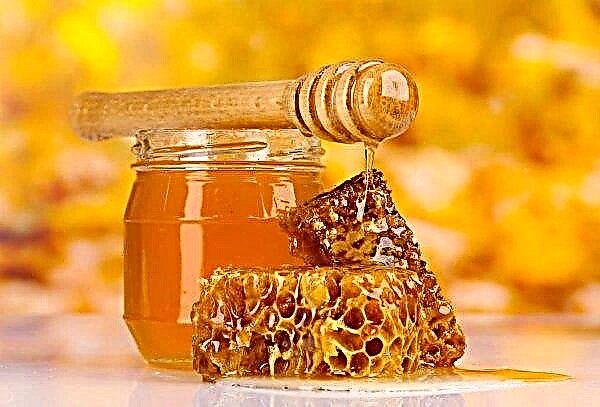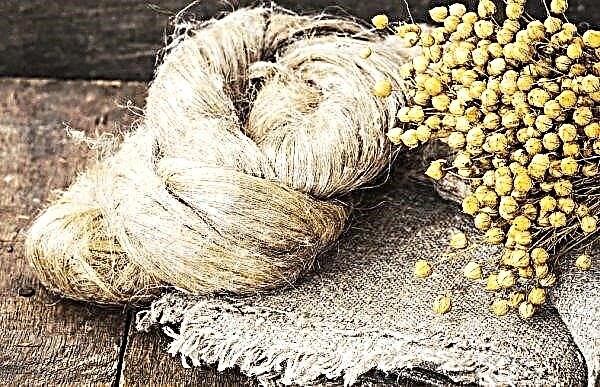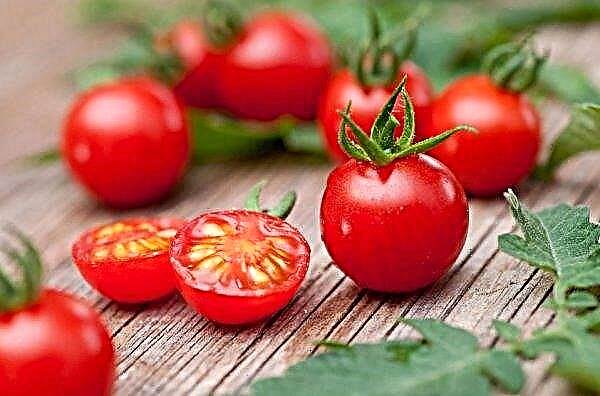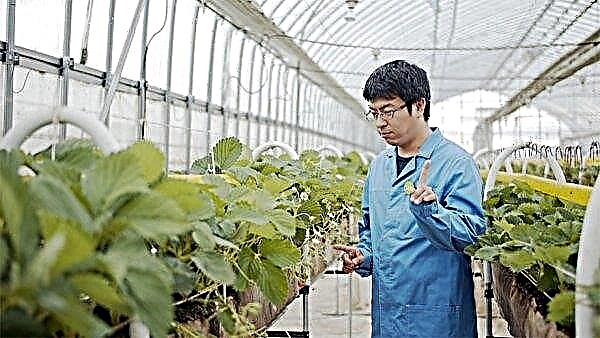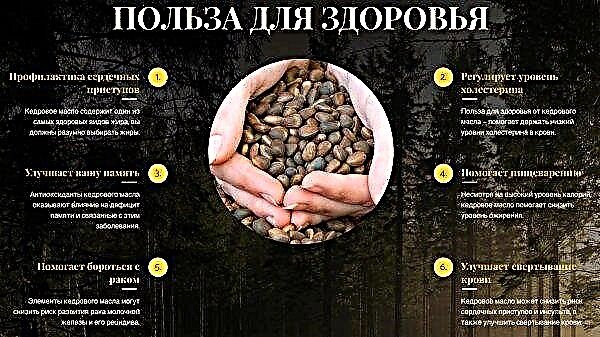Melon varieties are numerous and vary in peel characteristics, flesh color, shape. Chamomile got its name due to the visual similarity with the flower and bright yellow color. Read how to grow this melon in the article.
Grade characteristics
Modern melon comes from a wild ancestor from Africa. It was from there that the plant began to spread around the world. All modern varieties, including Chamomile, are highly specialized plants that are adapted to certain climatic conditions.
Outwardly, Chamomile is similar to African melons: a rounded shape with pronounced convex segments. But unlike them, it can be oblong. Another distinguishing feature is the pale green stripes at the joints of the segments, which is not observed in African melons.

Variety characteristic:
- basic: mid-season variety with a growing season of 80–90 days;
- zoned: for the Astrakhan and Voronezh regions;
- bush: short-haired, medium-leaved;
- leaves: medium sized, dissected, green;
- fruit: slightly elongated or rounded with pronounced segments, the veins between them are pale green;
- weight: 1.5-4 kg;
- peel: light yellow, smooth, medium thickness, mesh;
- taste: slightly sweet, pleasant, refreshing;
- pulp: white, granular, juicy;
- aroma: melon;
- seed nest: large, elongated;
- seeds: numerous, narrow-oval, cream-colored.
Did you know? Melon is a member of the pumpkin family. Her closest relatives — pumpkins and cucumbers.
Description and appearance of the bush and fruits
Chamomile is a compact bush formed by several vines. It does not take up much space, and if it is not at all, then gardeners use inclined frames or trellises for growing melons. Flowers form at the beginning of the vine. They are pollinated by bees and form ovaries.
The mass of the fetus is not constant. It depends on the conditions in which the bush grows, the nutritional value of the soil and the abundance of the sun, so the size of the fruit is in the range of 1.5-4 kg The more the plant receives sunlight and heat, the larger the resulting fruits.

Taste qualities
The taste of the melon is cool, slightly sweet, refreshing. It has no notes of musk, so it perfectly quenches thirst. The fruits are used to make drinks and desserts.
Ripening dates and sizes
The maturity of the melon at harvest time is crucial if it is grown for sale. Maturation occurs on 80–90 days, but they are harvested a little earlier. The ripeness of the fruit is evidenced by a clearly distinguishable melon aroma.
Did you know? Melons are rich in potassium - a trace element that helps control blood pressure, regulate heartbeat and prevent strokes.
Grade stability
Data on the resistance of the variety to diseases are not indicated. But it is worth noting that for melons this parameter is often not indicated. Most varieties are moderately resistant to fusarium, late blight and mosaic virus.

Pros and possible disadvantages
- Grade advantages:
- grown by seedlings and seeds;
- possesses a rich set of phytonutrients and quenches thirst well;
- readiness for transportation and storage for a month after harvest.
- The disadvantages of the variety:
- the fruits are not too sweet, which not everyone likes;
- the variety is zoned only for the southern regions, which means it will not give a good harvest in other climatic zones.
Features of planting varieties on the site
Growing melons in your area, you get more fragrant and juicy fruits than in the store. Despite the fact that gourds love heat, they can be grown in a temperate climate, if you create the right growing conditions. They will need the sun, plentiful watering and fertile soil.
Did you know? Arab legends say that the roughness and cracks on the surface of a melon — these are letters written by Allah himself.
Preparing seeds for planting
If you plant melon seeds, then better to germinate them first. Regardless of the seedling or seedling method you use, process seeds from phytopathogens. Soaking for 20 minutes. in warm water (+ 50 ° C) fatal to spores of fungi. It is also advisable to use a stimulant for growth.
The Phytosporin treatment is useful for both seeds and soil. The activity of the drug is provided by the bacterium Bacillus subtilis. Once in the ground, the bacterium inhibits the development of pathogenic microflora. This heals the soil, creates the conditions for the development of beneficial microflora and positively affects the development of plants.

Site and ground preparation
Pick the sunniest spot. Make sure that the soil is well drained or has a natural slope to remove moisture. The roots should not be in constant contact with moisture. Fruits should not grow in the shade, otherwise they will be small and tasteless.
Normal soil acidity for melons is - 6.0–6.8 pH. To make it more nutritious, you will need to make rotted manure or humus. They can be brought into the place of planting, mixing with the ground or directly into the pits with seeds. Fresh manure is not recommended - it may contain harmful microorganisms and contribute to the growth of weeds. Manure must be kept for at least 6 months before use.
Did you know? Almost all parts of the melon (fruits, seeds, leaves, and roots) are used in traditional Chinese medicine.
Timing and landing technology
The period of planting seeds in the soil depends on the region in which it is planned to grow melon. Most likely, the temperature optimal for the growth of melons will come at the end of May. At night, it should not fall below + 15 ° C.
Landing technology:
- Wait until the earth warms up above + 14 ° С, and the air - up to + 21 ° С. By this moment on the calendar will be the end of May or the beginning of June.
- Inspect the site, make sure that it will be well lit after the trees are completely covered with leaves.
- Consider planting melons near the south wall or fence to protect young plants from the cold spring wind.
- Prepare the beds by covering them with dark polyethylene 2 weeks before planting. So you warm up the soil and can remove the sprouted weeds.
- Add 5-10 kg / m² compost to the soil.
- Make holes with a distance of 0.5 m between them for planting seeds.
- Pour them with water.
- Plant 2-3 grains in 1 pit or 1 seedling if you grow melons in seedlings.
- You can also plant melons “in the hills”, 4-5 seeds per hill.

Care
Create a sheeting for seedlings or seeds. This optimizes the microclimate and smooths out the sharpness of the differences in day and night spring temperatures.
Plant Care Instructions:
- Organize watering melons every 2-3 days throughout the summer.
- Fertilize once a month.
- Tie the vines with soft materials if you grow them on a trellis so as not to deform or break them.
- Control the appearance of pests or diseases. If there is a risk of infection, take action.
 Caring for seedlings is simple, the main thing is that during irrigation water does not fall on the stems and leaves, but goes directly under the root
Caring for seedlings is simple, the main thing is that during irrigation water does not fall on the stems and leaves, but goes directly under the rootFertilizers and watering
Melon soil should be always moist, but not swampy. The best watering is intensive irrigation of the soil at periodic intervals so that the soil can dry out without causing withering between the irrigations of the vines.
Drip irrigation is recommended. This is a hose and dropper dispensers, which are located next to the roots. Water flows slowly, moistening the soil well. Frequency of watering - 2-3 times a week. Watering depth is about 10 cm.
Important! Excess moisture will make the melon less sugary and will certainly give it a watery taste.
Melons use a huge amount of nutrients. This quickly depletes the soil, so they need regular top dressing. The schedule of top dressing depends on the fertility of the site. If the plants develop well, do not feed them or apply a half dose of fertilizer.
Good start growth requires nitrogen. When ovaries form, phosphorus-potassium fertilizers will be needed. These microelements will ensure the development of fruits.
Feeding schedule:
- If the seedlings have 2-3 normal leaves - carry out the first top dressing. Apply any fertilizer with a balanced composition of nitrogen, phosphorus and potassium.
- After 3 weeks, feed them with liquid compost (3 kg / 10 l of water). Water temperature should be + 50 ° С when diluting fertilizer. Norm - 2 liters per 1 plant.
- After 2 weeks, feed with ammonium nitrate, diluting 20 g of nitrate in 10 l of water. The application rate is 2 liters under one plant.
- After 3 weeks, add an aqueous ash solution mixed in a 1: 3 ratio.
Loosening and weed control
Soil care consists of:
- weed weeding;
- loosening;
- mulching.
Weeds need to be weeded out so that they do not compete with melons for nutrients and water. Loosening and weeding of weeds is carried out the day after watering. The depth of tillage is 5 cm.

Some gardeners practice mulching crops. This solves several problems at once: it prevents the growth of weeds, retains moisture in the soil, prevents contact of the soil with pests, allows the soil to remain loose enough for the roots to develop better. But this method also has drawbacks. If you mulch with straw, pests begin to use it for living and reproduction, so the choice of mulch should be approached more practical.
Disease and Pest Prevention
Melons experience difficulties due to their susceptibility to fungi and mold, as well as some insects. This is especially true if they are grown in a cooler and wetter climate than is required for the variety.
The main diseases and methods for their treatment:
- Powdery mildew manifests itself in the form of many white spots, similar to sprinkled flour on leaf plates. Such leaves dry quickly. They need to be removed and destroyed, and the crops treated with a solution of colloidal sulfur: 50 g of the substance is dissolved in 10 l of water. After a week, the treatment is repeated.
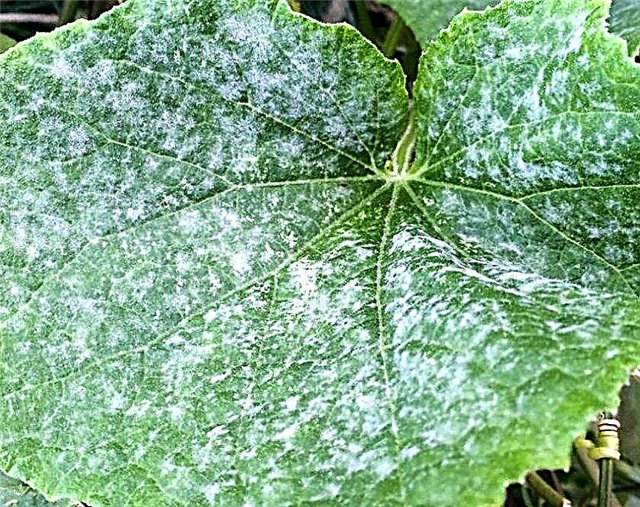
- Downy mildew characterized by dry yellow spots. From the underside of the leaf you can see a floury coating. For treatment, treat the crops with a 1% solution of Bordeaux fluid.
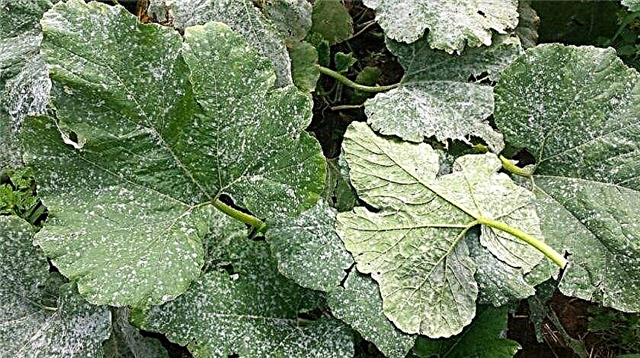
- Fusarium wilt manifested in the form of discoloration of leaves and shoots, followed by wilting. To treat the beds, they are sprayed with a solution of potassium chloride.
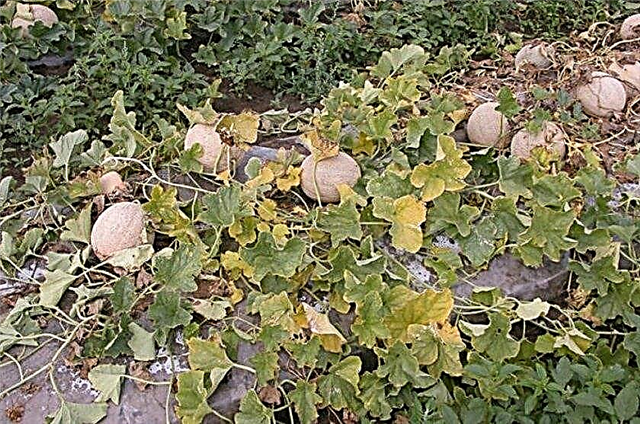
- Round, as if chipped spots on fruits and leaves - this anthracnose. In places where spots appear on the fruits, rotting appears, and the leaves fade. For treatment, treat the crops with a 1% solution of Bordeaux fluid.
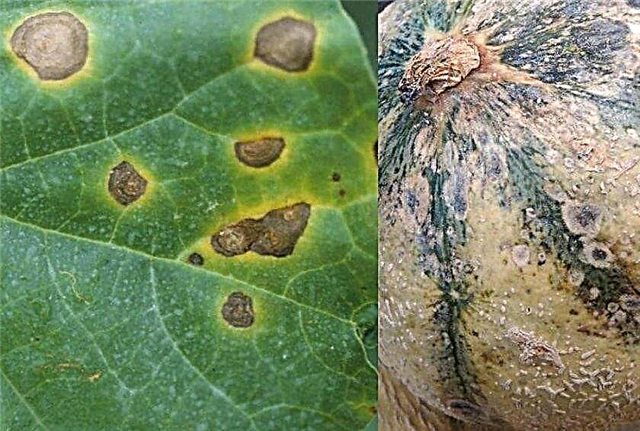
- Root rot infects plants if their roots are regularly in contact with water. Change the watering schedule for the rest of the plants, and the one that began to rot should be dug up and destroyed.
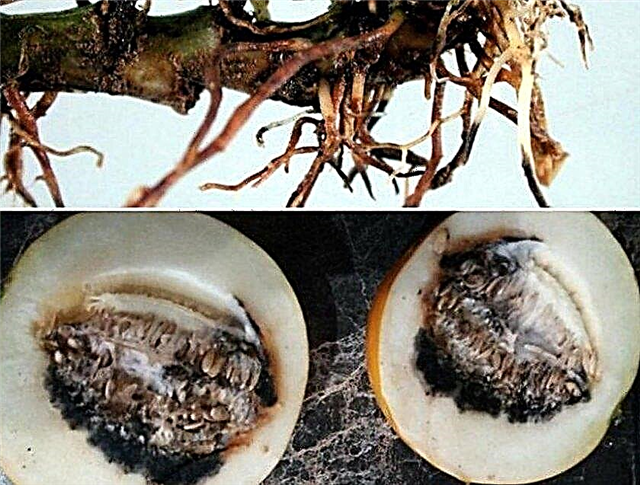
There are also quite a lot of insects that can affect melons. All of them are easily controlled with insecticides.
Important! Ripe melons are more vulnerable to diseases than green ones, so the closer the harvest is, the more carefully you need to monitor their condition.
The main insect pests:
- Gourd aphids - small green insects that feed on the sap of plants and form clusters on the stems or underside of the leaves. Spray melons with a soap solution or Karbofos (60 g / 8 L of water).
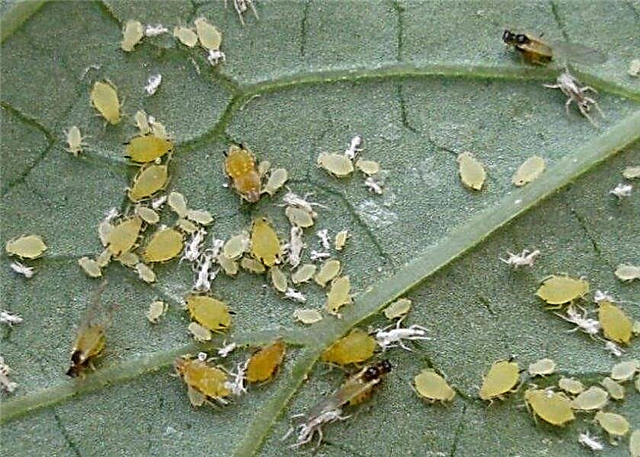
- Spider mite can be brought by wind from neighboring plantations. It is difficult to notice it due to micro sizes. Traces of his life - holes on the leaves and thin cobwebs. To control ticks, acaricides are used.
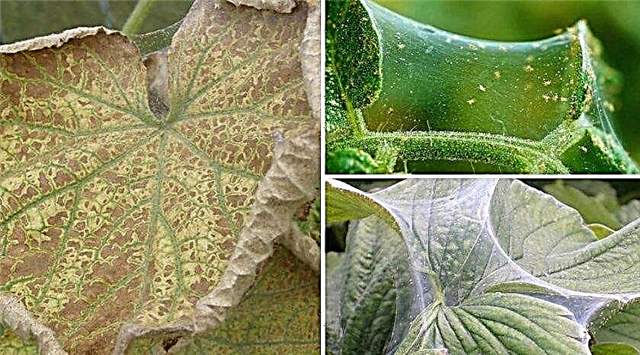
- Wireworms - long, copper-colored worms. They are the larvae of the nutcracker. They feed on fruits, gnawing moves. Due to the fact that the pest enters the fetus, it is impossible to "get" insecticides. To combat it, you must follow the rules of crop rotation and plant mustard in the aisles. Its essential oils repel the pest.
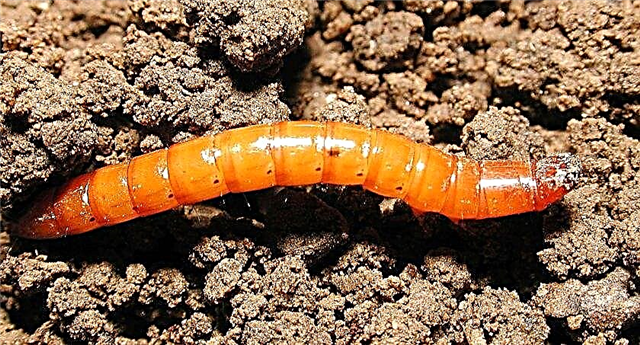
- Butterfly Scoop Larvae affect the stems. Some farmers practice a very ingenious way of dealing with them: they cover the plants with a net, thereby depriving the butterflies of the opportunity to land and lay eggs on melons. Of the chemicals used "Decis" and "Volaton."
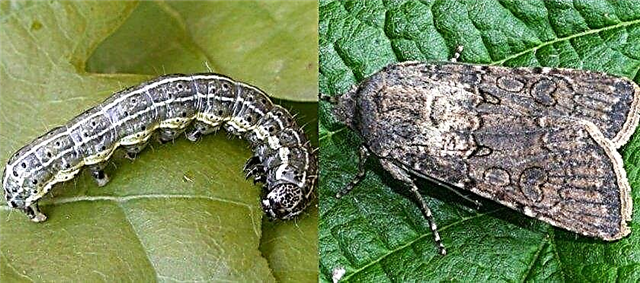
Harvesting and storage
Melons should be collected selectively, as the fruit ripens. Typically, harvesting from one bush is carried out 4-6 times, depending on the number of fruits on the stem. The crop will be ready for harvest 80–90 days after emergence.
Of course, color and size are not indicators of maturity, so farmers are guided by the following factors:
- melons exude a rich melon aroma;
- cracks appeared at the junction of the tail and the peduncle;
- the fetus is easily separated from the vine;
- knuckling on the fetus gives a dull sound.
Important! Pre-cooling of melons after harvest is recommended. The temperature in the storage room should drop to +4 ... + 6 ° C, and relative humidity to 85–90%.
Fruits should be evenly colored. 2 weeks before harvesting, irrigation is stopped to increase the percentage of keeping the crop and the accumulation of sweetness in the fruits. Melons can not be stored for longer than 1 month, so the collected fruits are placed in boxes in a ventilated room and gradually eaten, or processed in the form of jam, jelly or other blanks.
Growing melons is not so difficult. If you have enough room to grow, you can try growing Chamomile. This is quite affordable even for beginners.










